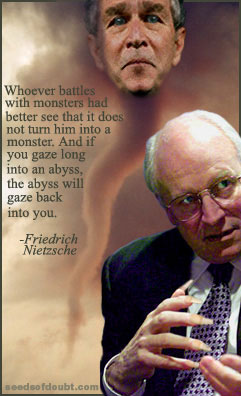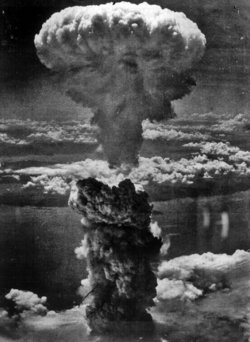Officials Describe Interference by Former Gonzales Aide
By Dan Eggen and Carol D. Leonnig
The Washington Post
Wednesday 23 May 2007
When Jeffrey A. Taylor, interim U.S. attorney for the District of Columbia, wanted to hire a new career prosecutor last fall, he had to run the idea past Monica M. Goodling, then a 33-year-old aide to Attorney General Alberto R. Gonzales.
The candidate was Seth Adam Meinero, a Howard University law school graduate who had worked on civil rights cases at the Environmental Protection Agency and had served as a special assistant prosecutor in Taylor's office.
Goodling stalled the hiring, saying that Meinero was too "liberal" for the nonpolitical position, according to two sources familiar with the dispute.
The tussle over Meinero, who was eventually hired at Taylor's insistence, led to a Justice Department investigation of whether Goodling improperly weighed political affiliation when reviewing applicants for rank-and-file prosecutor jobs, the sources said.
A 1999 graduate of Regent University law school in Virginia Beach with six months of prosecutorial experience, Goodling was among a small coterie of young aides to Gonzales who were remarkable for their inexperience and autonomy in deciding the fates of seasoned Justice Department lawyers, according to current and former officials who worked with the group.
She worked closely last year with D. Kyle Sampson, then the attorney general's chief of staff, sifting through lists of U.S. attorneys considered for removal, according to congressional interviews and Justice Department documents released to the public. Goodling also was central to the department's stumbling efforts to defend its handling of the firings of nine prosecutors, at times by attacking their reputations. She resigned in April.
Goodling is scheduled to testify today before the House Judiciary Committee about the firings, under an offer of immunity.
"All I ever wanted to do was serve this president, this administration, this department," Goodling tearfully told a senior Justice official shortly before she quit, according to a transcript of his interview released by the House committee last night.
Goodling's attorney, who has accused Democratic lawmakers of having already made up their minds about his client's role, did not return e-mail and telephone messages left at his office yesterday.
Goodling had been a divisive figure at the Justice Department since she arrived in early 2002, gaining a reputation for having a mercurial temperament and being prickly toward career employees, said numerous current and former officials who worked with her.
Goodling and Sampson "knew politics, not law," said Bruce Fein, a senior Justice official during the Reagan administration. "This extent [of] neophytes running the department is highly irregular."
Goodling started at Justice in a newly created position as senior counsel to the head of the public affairs office.
Nearly everyone who worked with her agreed that she was a tireless employee who often worked late into the night, and said she had deep loyalty to President Bush and his administration.
"She was very hardworking, she was dedicated, she was professional," said one former Justice official who worked closely with Goodling. "She is the type of person who is good at carrying out tasks. She was dependable."
In 2004, Goodling spent six months in the U.S. attorney's office for the Eastern District of Virginia, in a special program designed to give Justice employees and other government lawyers a chance to gain courtroom experience.
Reviews of her tenure there are mixed. Three current or former Justice officials said she quickly developed a reputation for having an antagonistic and sharply ideological style. Others said she carried out her responsibilities professionally.
Goodling's next stop was as deputy director of the Executive Office for U.S. Attorneys, which oversees the department's 93 chief prosecutors. In April 2006, she began working for Gonzales, who granted her and Sampson broad powers to make personnel choices and other major decisions, according to officials and documents.
E-mails and other documents show that Goodling, who was also Justice's liaison to the White House, played a central role in arranging for the appointment of Tim Griffin, a former Republican National Committee official and aide to presidential adviser Karl Rove, as the U.S. attorney in Little Rock.
Goodling also met last summer with two New Mexico Republicans who complained about then-U.S. Attorney David C. Iglesias, who was later fired. In another case, she single-handedly blocked the dismissal of a North Carolina prosecutor who for more than a year had been on the list of candidates to be fired.
The dispute with Taylor came last fall, when Taylor heard that Goodling was thwarting his effort to hire Meinero, sources said.
Taylor complained to Goodling directly, according to two sources who were told about the conversation, saying that a U.S. attorney's office hires all kinds of people. Taylor also complained to Sampson, who was a friend and eventually gave Taylor the authority to bypass Goodling.
Taylor mentioned the experience to U.S. Attorney Chuck Rosenberg of Alexandria, the sources said. After Rosenberg became Gonzales's temporary chief of staff following Sampson's resignation, he asked the department's inspector general to look into Taylor's allegations, they added.
Before she and Sampson resigned, Goodling wrote a series of memos summing up the longtime U.S. attorneys she helped to fire. She said that Iglesias was "in over his head," that Carol C. Lam of San Diego showed "a failure to perform" and that Arizona's Paul K. Charlton was guilty of "repeated instances of insubordination."
Yet Goodling's final list, assembled as "talking points" for Congress and the media, also noted that nearly every fired prosecutor had received stellar reviews from Justice Department evaluators.
Goodling's public troubles began in mid-March, when Sampson disclosed to Deputy Attorney General Paul J. McNulty and others that the plan to fire the U.S. attorneys had begun more than two years earlier in the White House, contrary to what McNulty and another official had testified to Congress.
He and Principal Associate Deputy Attorney General William E. Moschella were livid, believing that Goodling and Sampson had misled them during preparations for the testimony, according to new transcripts released yesterday by the House Judiciary Committee.
"They were dead to him," Justice official David Margolis said, referring to Moschella. "They had burned their bridges with him."
Margolis said that Goodling was "shaken to her core" by the controversy and that she sobbed for "30 to 45 minutes" during a meeting in his office shortly before she resigned.
"I knew she must think that everything was unraveling," he said. "And, you know, she was right about that."
Staff writers Amy Goldstein and Jerry Markon contributed to this report.
(In accordance with Title 17 U.S.C. Section 107, this material is distributed without profit to those who have expressed a prior interest in receiving the included information for research and educational purposes. The Lantern has no affiliation whatsoever with the originator of this article nor is The Lantern endorsed or sponsored by the originator.)
....And The Truth Shall Set Us Free
Sunday, May 27, 2007
Subscribe to:
Post Comments (Atom)







No comments:
Post a Comment